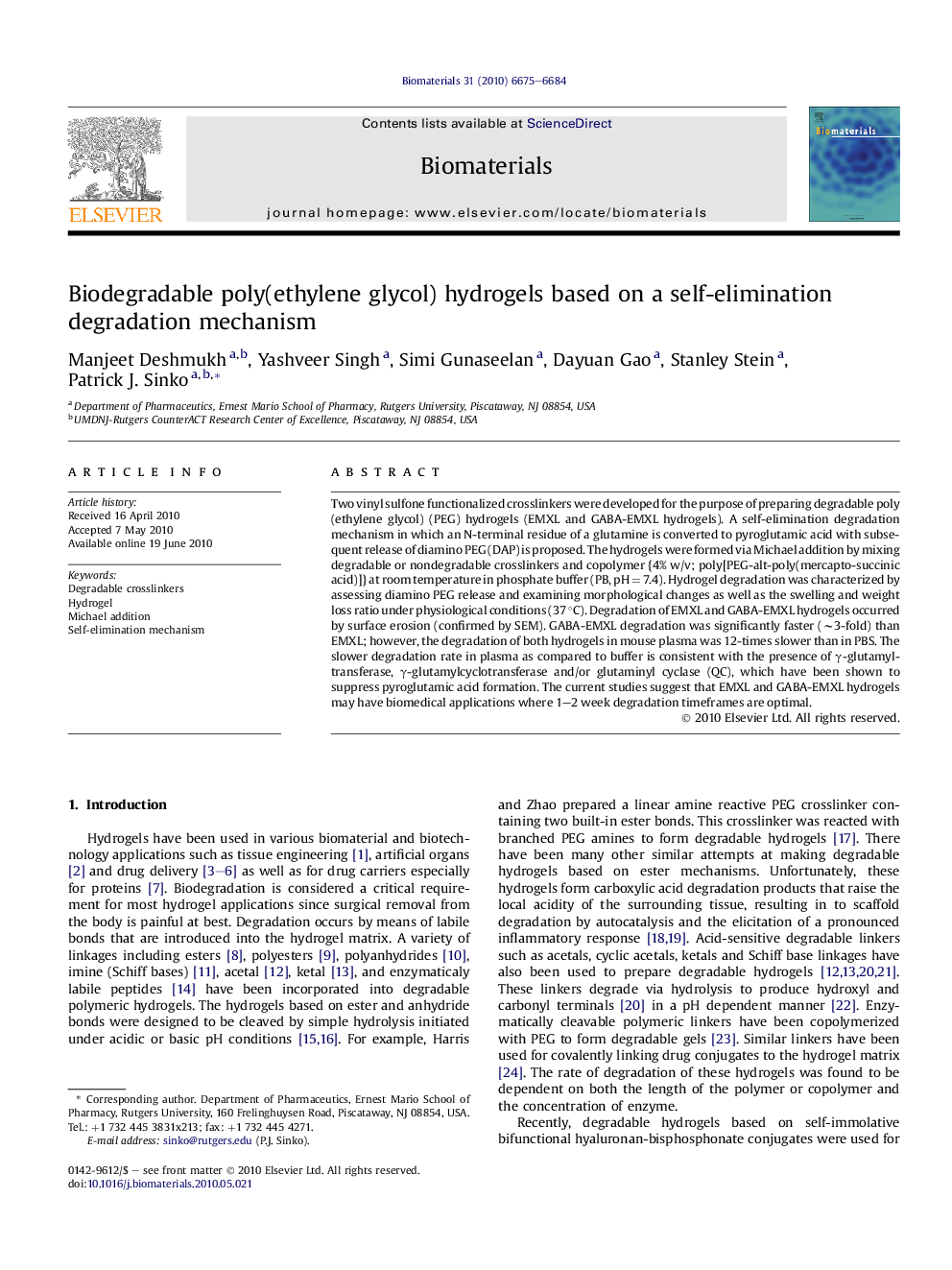| کد مقاله | کد نشریه | سال انتشار | مقاله انگلیسی | نسخه تمام متن |
|---|---|---|---|---|
| 8702 | 603 | 2010 | 10 صفحه PDF | دانلود رایگان |

Two vinyl sulfone functionalized crosslinkers were developed for the purpose of preparing degradable poly(ethylene glycol) (PEG) hydrogels (EMXL and GABA-EMXL hydrogels). A self-elimination degradation mechanism in which an N-terminal residue of a glutamine is converted to pyroglutamic acid with subsequent release of diamino PEG (DAP) is proposed. The hydrogels were formed via Michael addition by mixing degradable or nondegradable crosslinkers and copolymer {4% w/v; poly[PEG-alt-poly(mercapto-succinic acid)]} at room temperature in phosphate buffer (PB, pH = 7.4). Hydrogel degradation was characterized by assessing diamino PEG release and examining morphological changes as well as the swelling and weight loss ratio under physiological conditions (37 °C). Degradation of EMXL and GABA-EMXL hydrogels occurred by surface erosion (confirmed by SEM). GABA-EMXL degradation was significantly faster (∼3-fold) than EMXL; however, the degradation of both hydrogels in mouse plasma was 12-times slower than in PBS. The slower degradation rate in plasma as compared to buffer is consistent with the presence of γ-glutamyltransferase, γ-glutamylcyclotransferase and/or glutaminyl cyclase (QC), which have been shown to suppress pyroglutamic acid formation. The current studies suggest that EMXL and GABA-EMXL hydrogels may have biomedical applications where 1–2 week degradation timeframes are optimal.
Journal: Biomaterials - Volume 31, Issue 26, September 2010, Pages 6675–6684